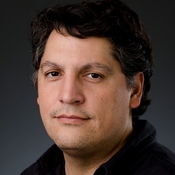Theoretical seminar | 03 November 2021
Online

In lattice science, physicists, chemists and material scientists focus on wave propagation considering different lattice geometries and different – linear and nonlinear – interactions to visualize new solutions for improving localization and transport of energy across a given system. The most standard theory is written assuming a tight-binding approximation, where every lattice site possesses a given state which, in most of the cases, corresponds to the fundamental symmetric ground state (typically called S wave-function). Therefore, most of the theory and experiments found in literature assume this wave-function at every site and construct a full lattice by inserting nearest-neighbor interactions plus different effects coming from magnetic and electric fields, spin-orbit, dipole-dipole interactions, self-focusing, among many others. Although it has been suggested theoretically the possibility of studying lattice interactions by assuming higher-order states as, for example, P or D wave-functions, solid experiments showing this interaction and direct control are still missing.
In this work, we explore theoretically, numerically and experimentally an orthogonal coupling interaction, focused on S and P wave-functions. We demonstrate a simple method which proposes the creation of asymmetric double-well like potentials in order to effectively tune the states energies. We specifically focus on a photonic context, where the theory perfectly coincides with a single-particle picture from quantum mechanics. We construct a full analogy between these two different scenarios and demonstrate, first, by numerical integration of a paraxial wave equation, that a perfect transfer of energy is possible between S and P wave-functions and, even further, between S and D states. We experimentally characterize the fabrication of single and multi-mode waveguides, using a femtosecond laser writing technique, and construct asymmetric photonic dimers (double-well potentials) to directly show the excitation of P wave-functions by a direct inter-orbital coupling from an initially S state. We show sinusoidal transfer dynamics by scanning the propagation distance along waveguides and perfectly show the oscillation of energy between S and P states. We characterize the coupling versus distance for S-S, S-P and P-P interactions to stimulate further research on extended lattice systems. As a concrete application, we implement a phase beam splitter (π-BS) which splits an input S-wave-function into two S states, but having a π-phase difference. From a more applied point of view, our proposal is a device itself which perfectly works as a mode converter, which is quite relevant nowadays for classical and quantum information spatial multiplexing techniques, that are expected to be an answer for the increasing internet demand along optical fiber networks. Also, the π-BS gives a new solution for quantum protocols where a phase beam splitter could be an important tool for concatenated operations.
"Experimental Observation of Interorbital Coupling", Diego Guzmán-Silva, Gabriel Cáceres-Aravena, and Rodrigo A. Vicencio Phys. Rev. Lett. 127, 066601 (2021).
"Perfect localization on flat-band binary one-dimensional photonic lattices", Gabriel Cáceres-Aravena and Rodrigo A. Vicencio, Phys. Rev. A 100, 013803 (2019).
"Topological and flat-band states induced by hybridized linear interactions in one-dimensional photonic lattices", G. Cáceres-Aravena, L. E. F. Foa Torres, and R. A. Vicencio
Phys. Rev. A 102, 023505 (2020).
